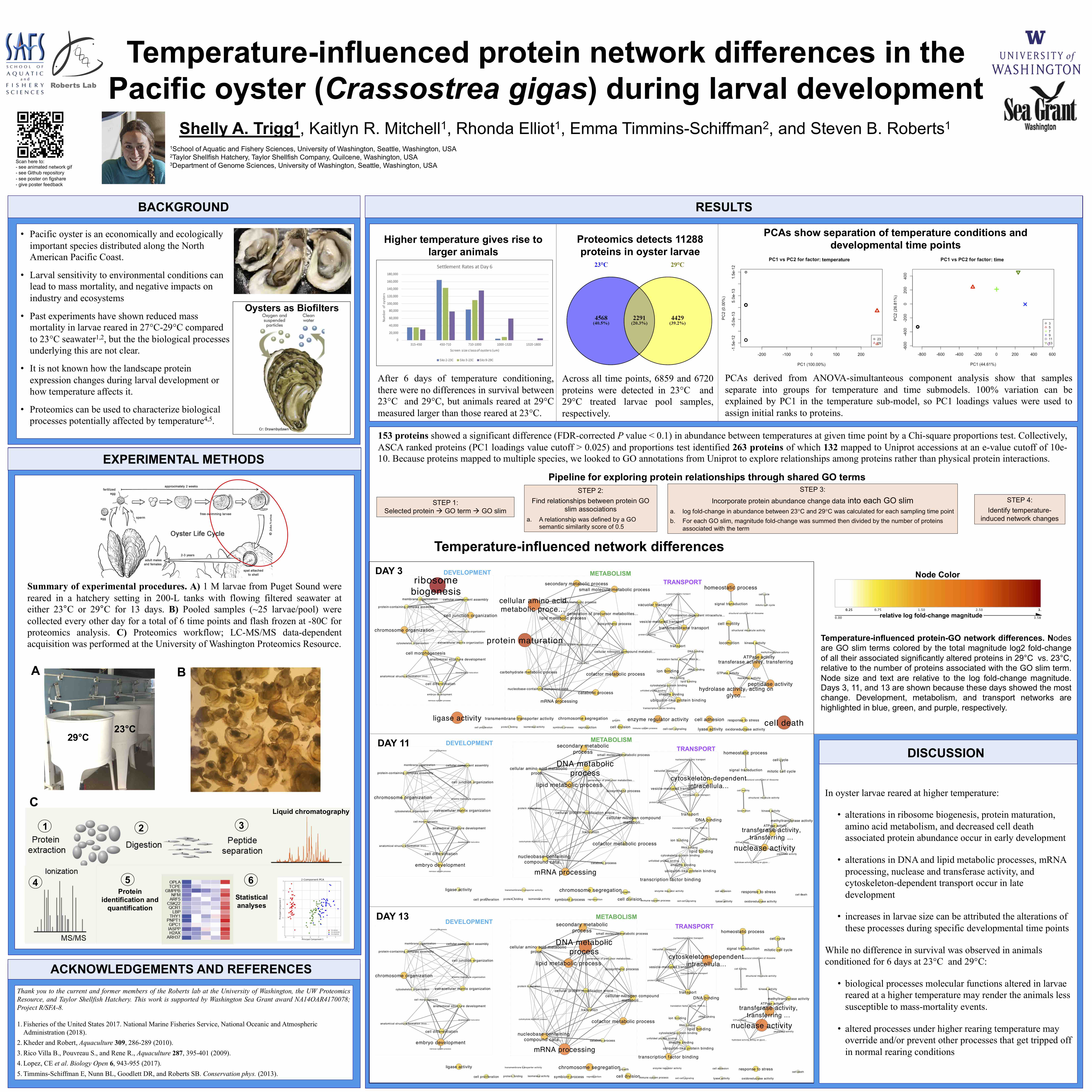Click here to view or download this poster on FigShare
Click here to see animated network GIF
Click here to give feed back on this poster
Click here to navigate to github repository

ABSTRACT:
TEMPERATURE-INFLUENCED PROTEIN NETWORK DIFFERENCES
IN THE PACIFIC OYSTER (CRASSOSTREA GIGAS) DURING LARVAL DEVELOPMENT
Shelly A Trigg1, Kaitlyn R Mitchell1, Emma B Timmins-Shiffman2, Rhonda Elliott3, and Steven B Roberts1
1University of Washington, School of Aquatic and Fishery Sciences,Seattle, WA, 2University of Washington, Department of Genome Sciences,Seattle, WA, 3Taylor Shellfish, Inc., Taylor Shellfish Hatchery, Quilcene,WA
The Pacific oyster has major ecological and economic importance serving as a biofilter and habitat in coastal ecosystems, and contributing over $190M to annual marine aquaculture revenue. However, little is known about the landscape of protein expression during early development, a time when mass mortality is common which can negatively impact industry and ecosystems. To better characterize physiological pathways and associated networks active during oyster development we performed a developmental time series proteomics analysis of larval cultures reared at 23°C and 29°C. These temperatures were selected based on the reports from the aquaculture industry that differential performance is observed in oysters at these temperatures. We found differentially abundant proteins among larval cultures reared at different temperatures and a larval culture that experienced mass mortality. Results from functional protein network analyses provide deeper insight into the mechanisms underlying fundamental developmental processes and mortality events. This proteomics analysis combined with survival and development observations offers greater clarity on environmental conditions that can improve aquaculture production.